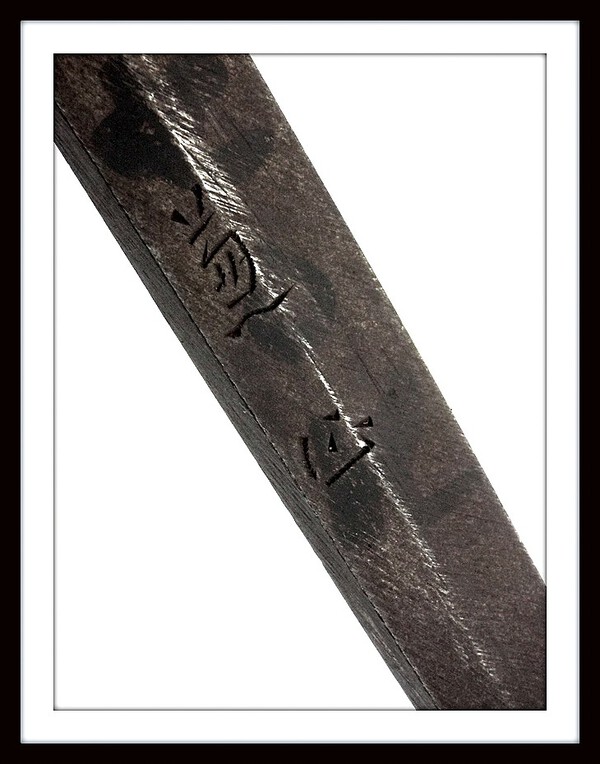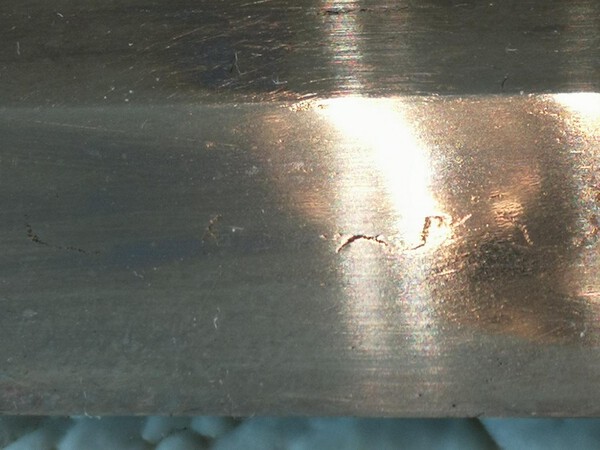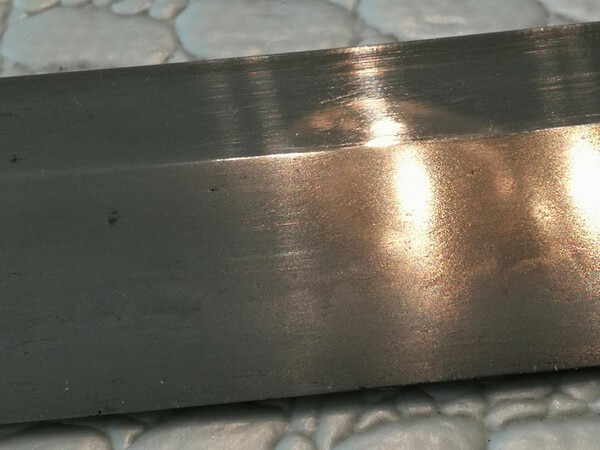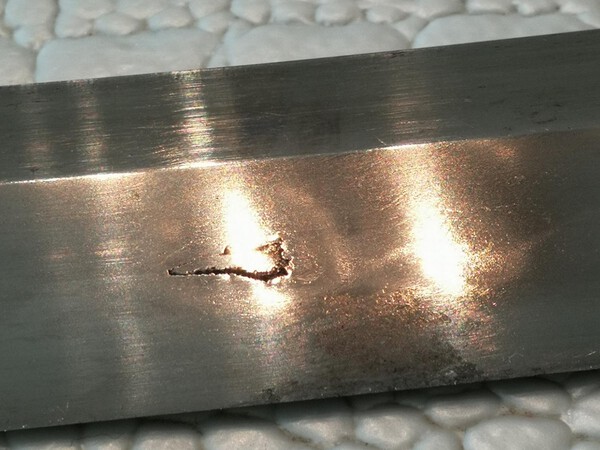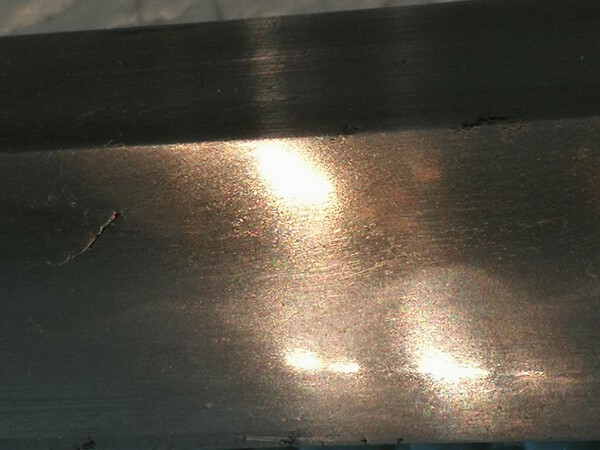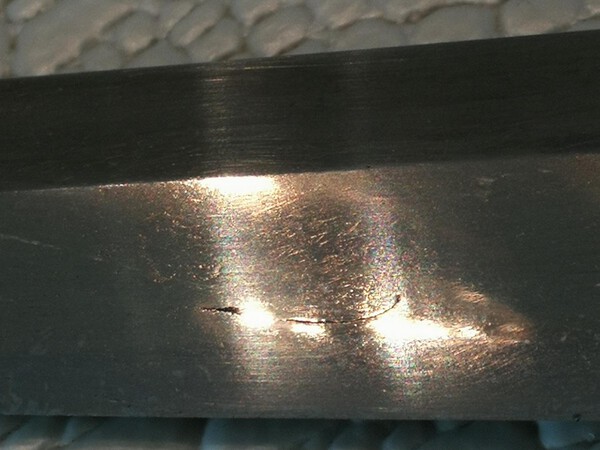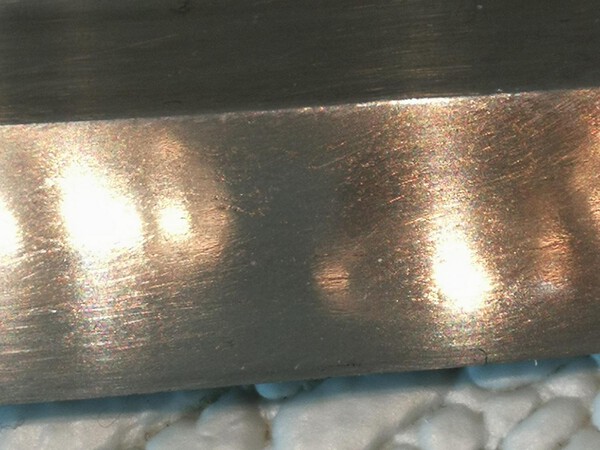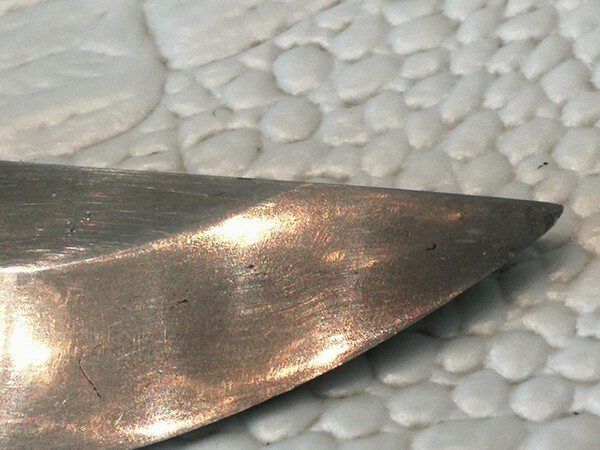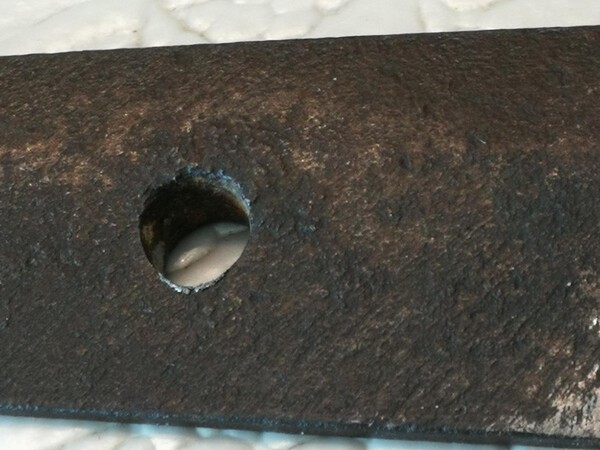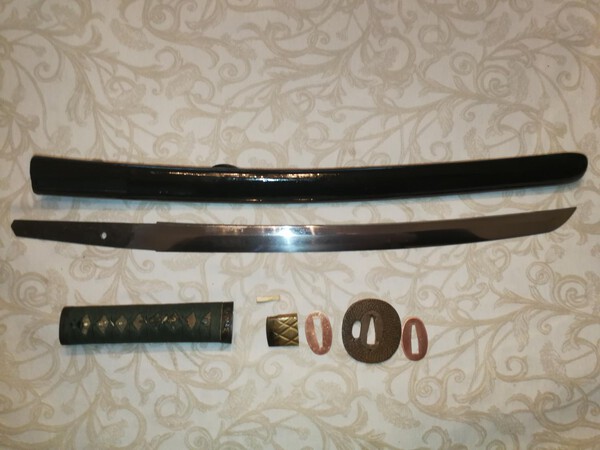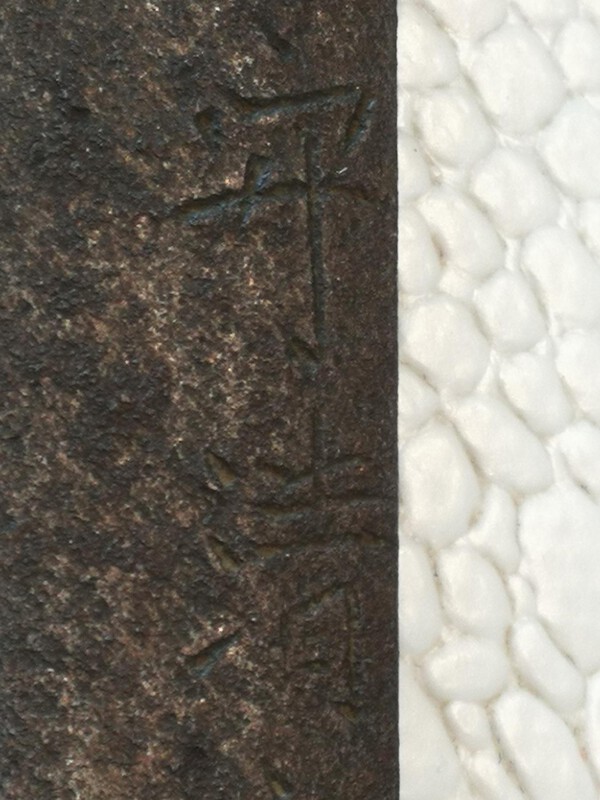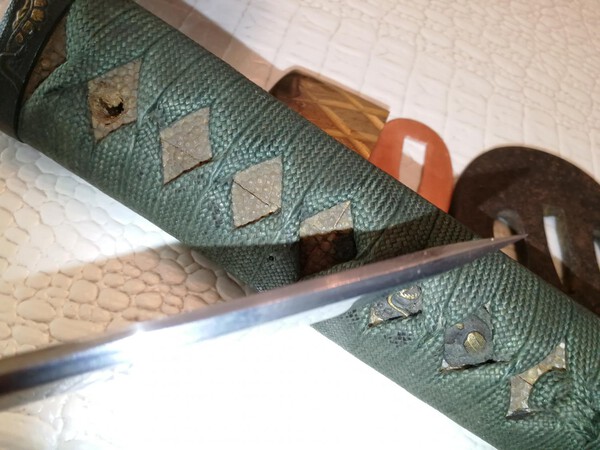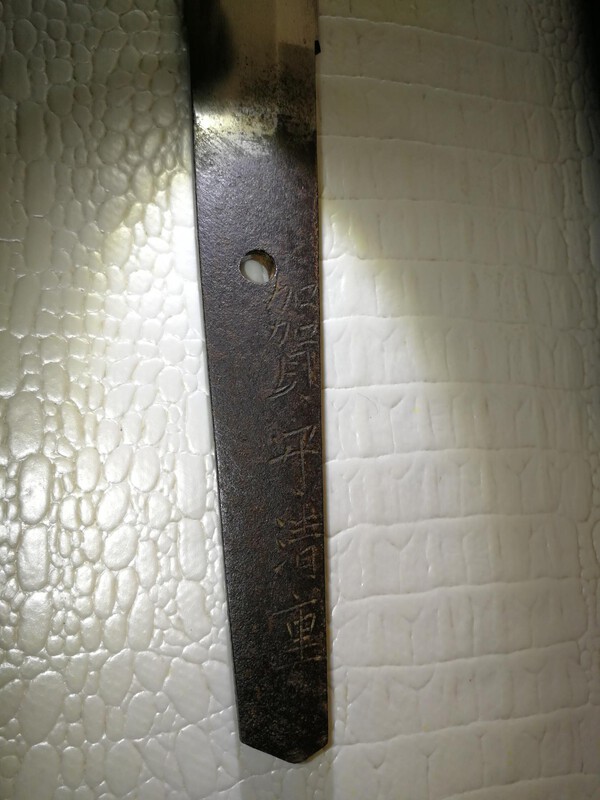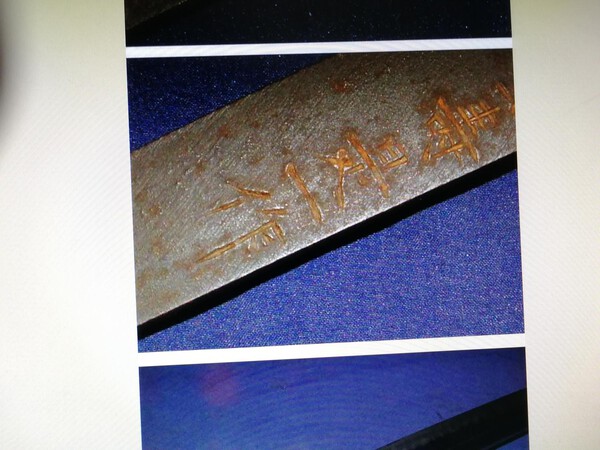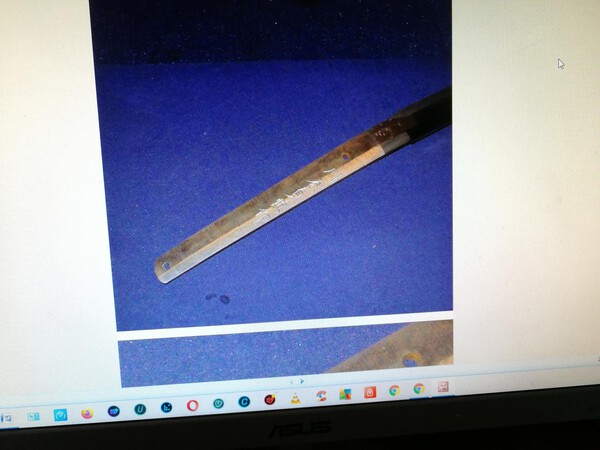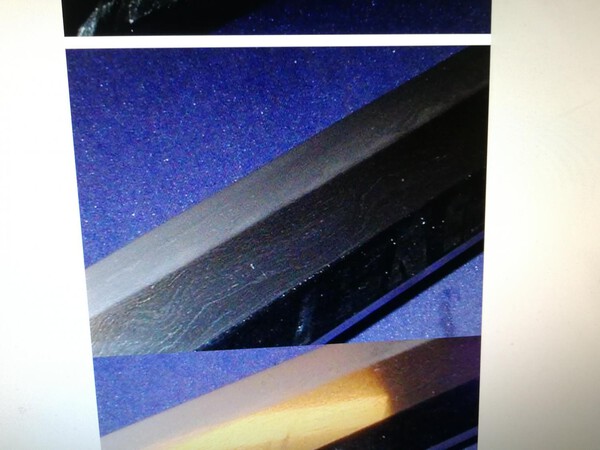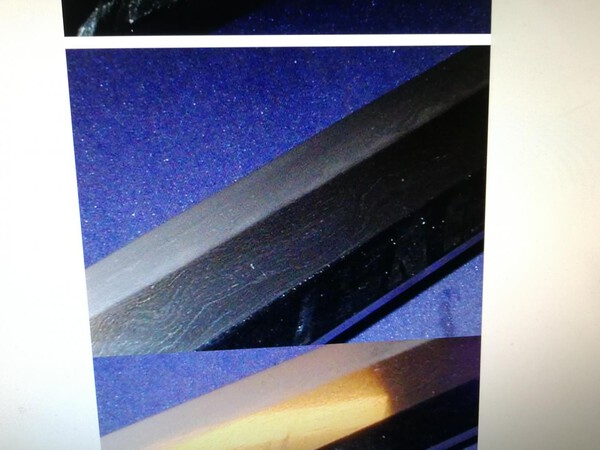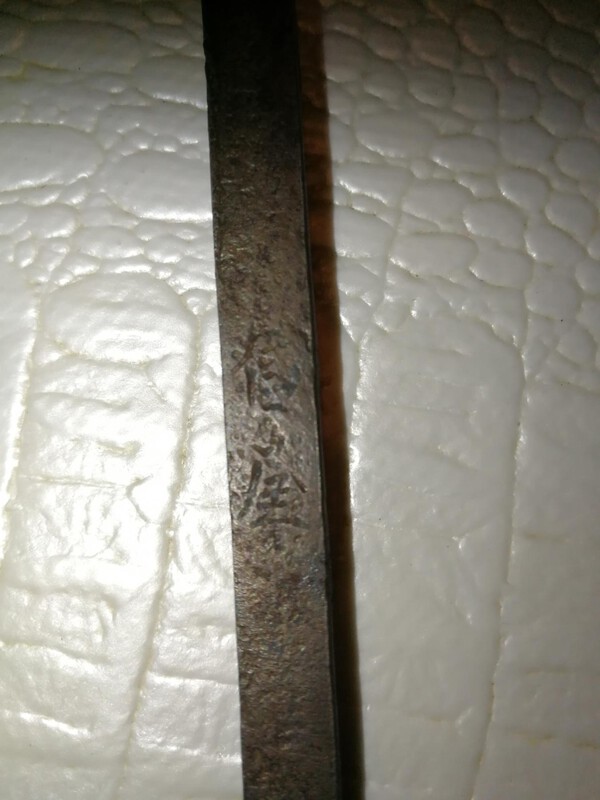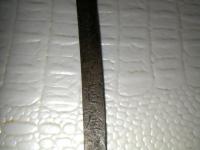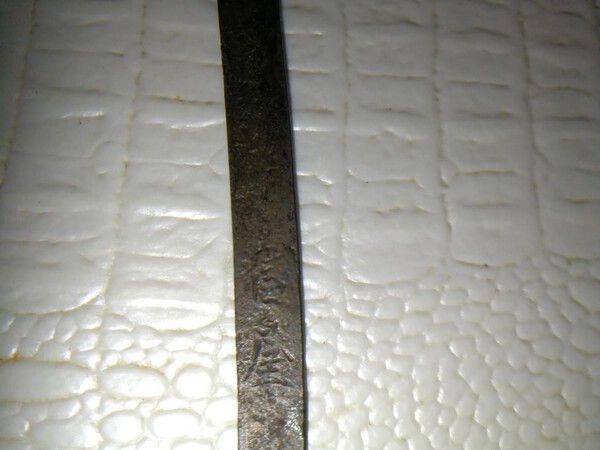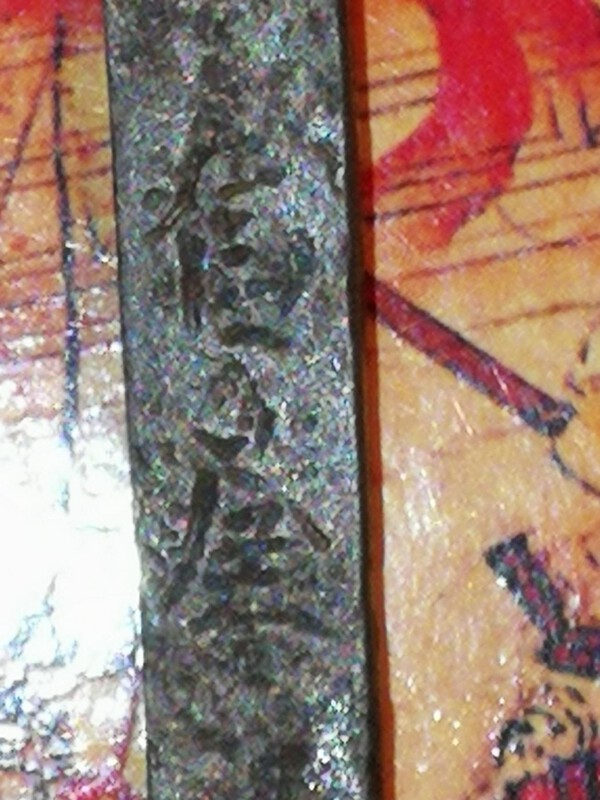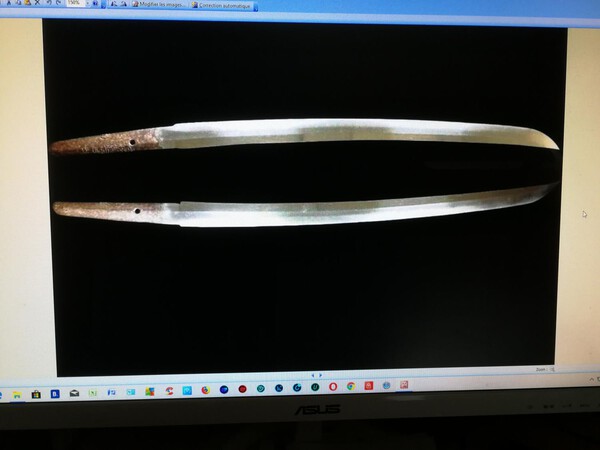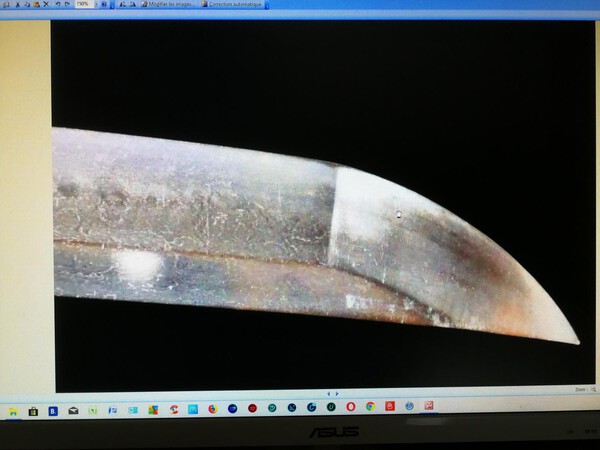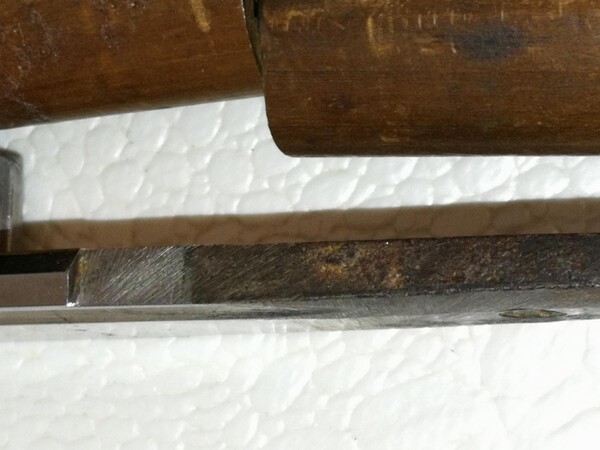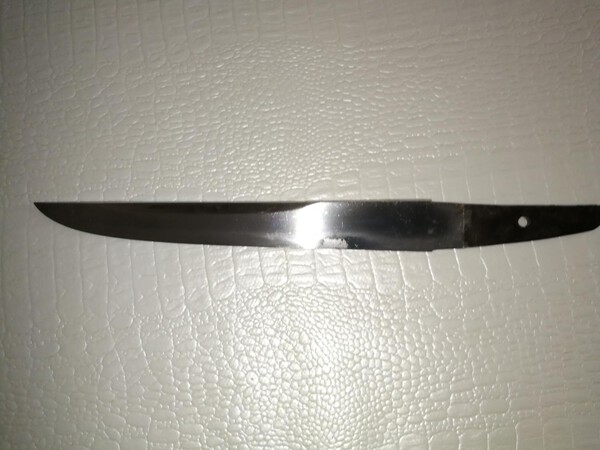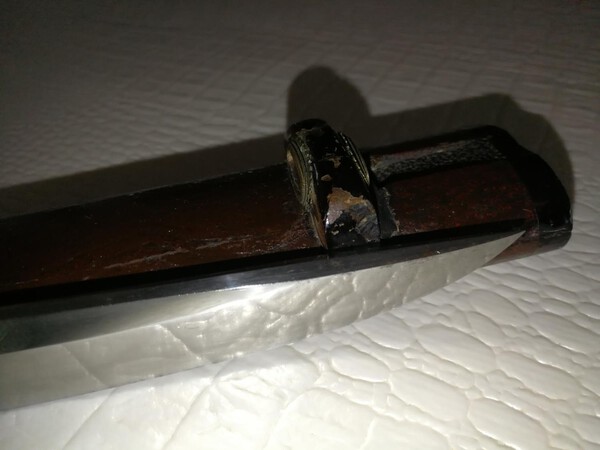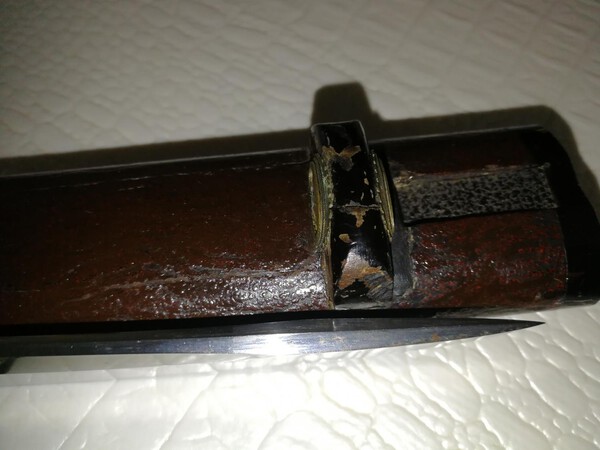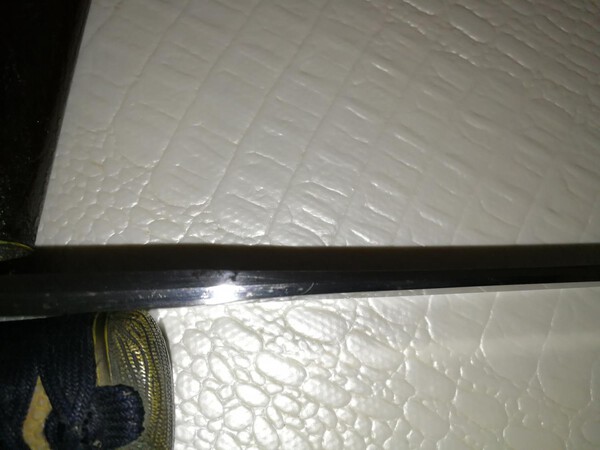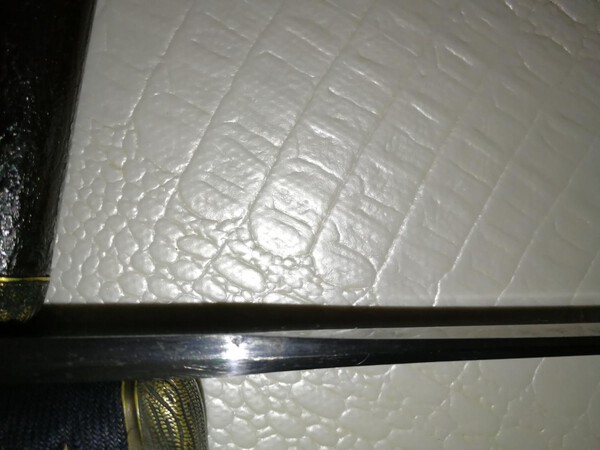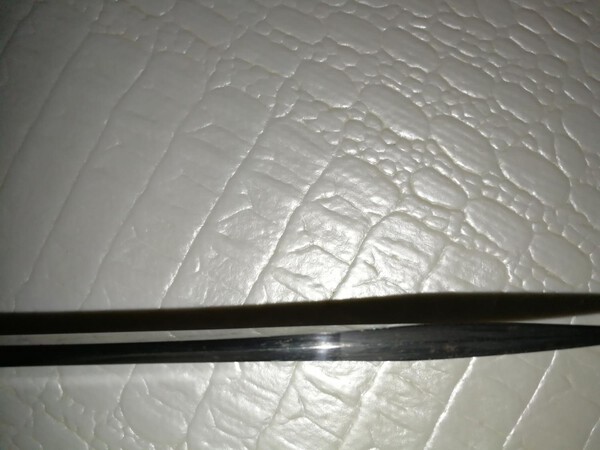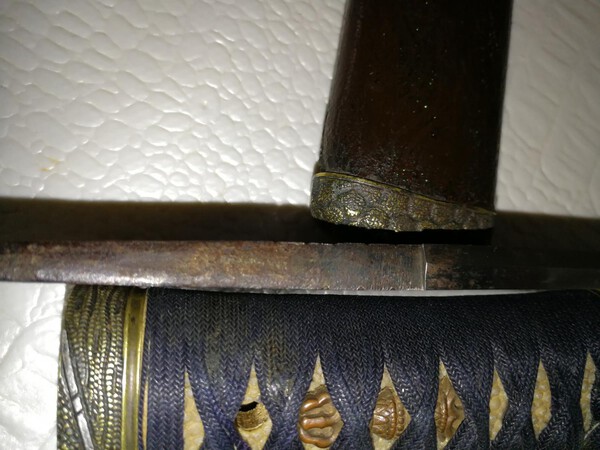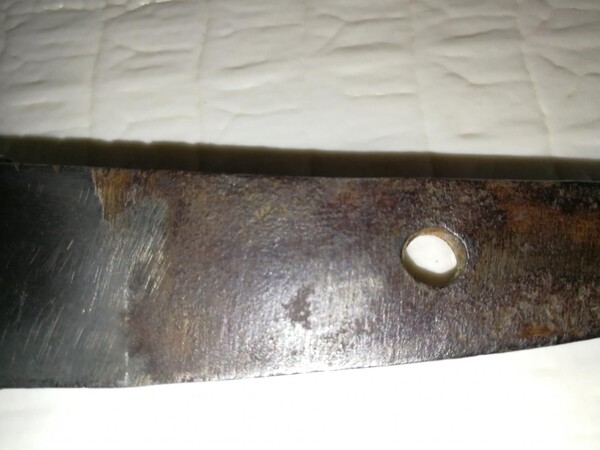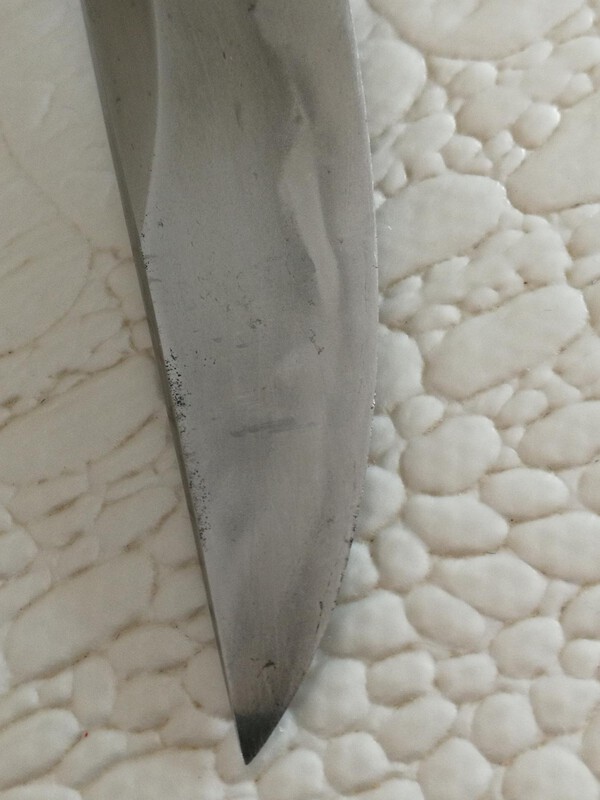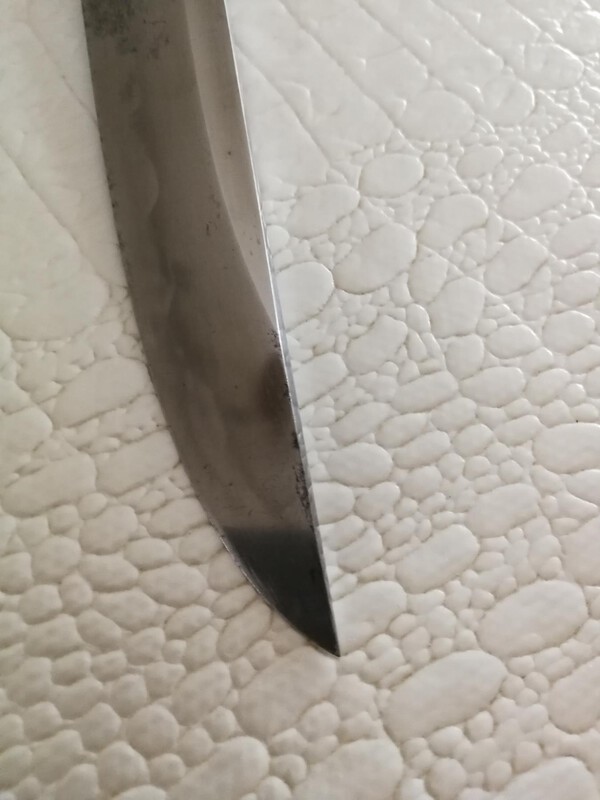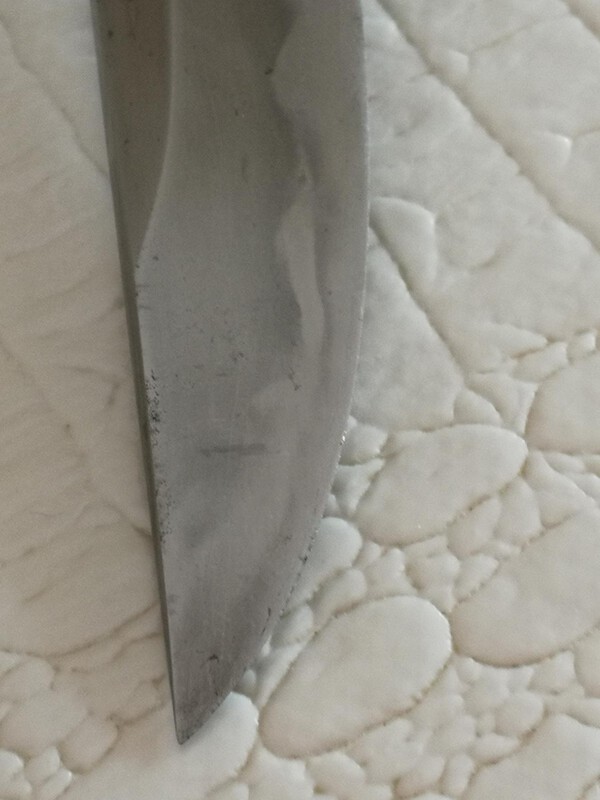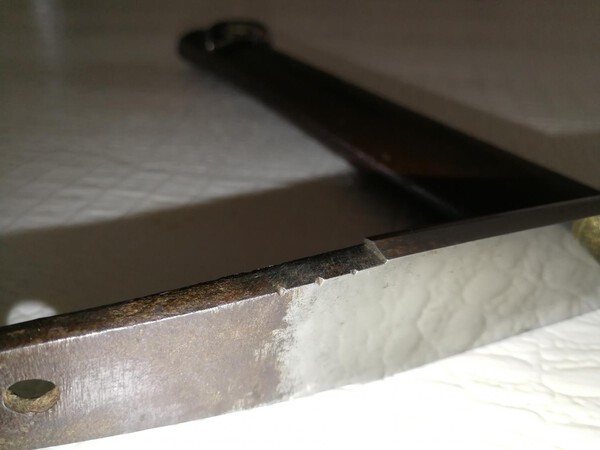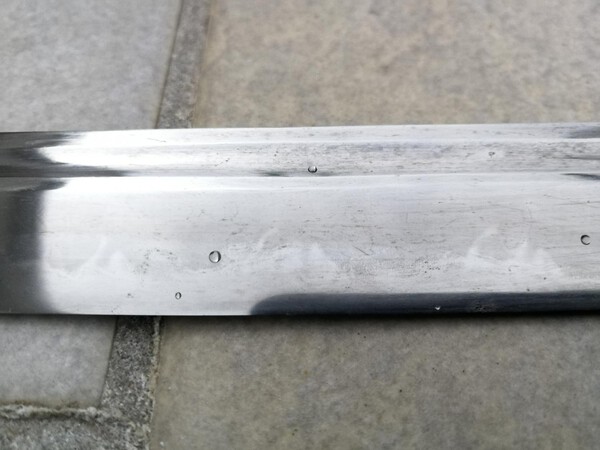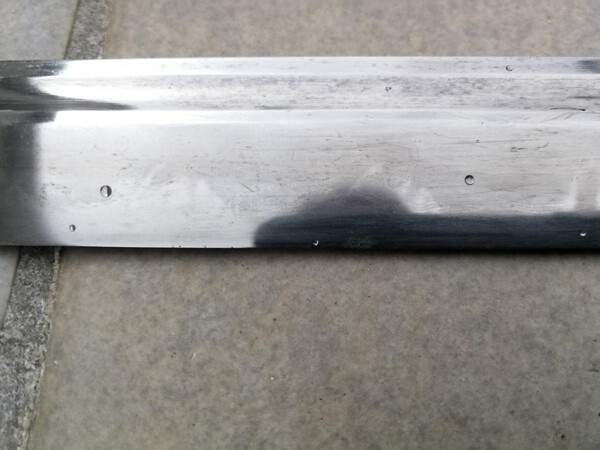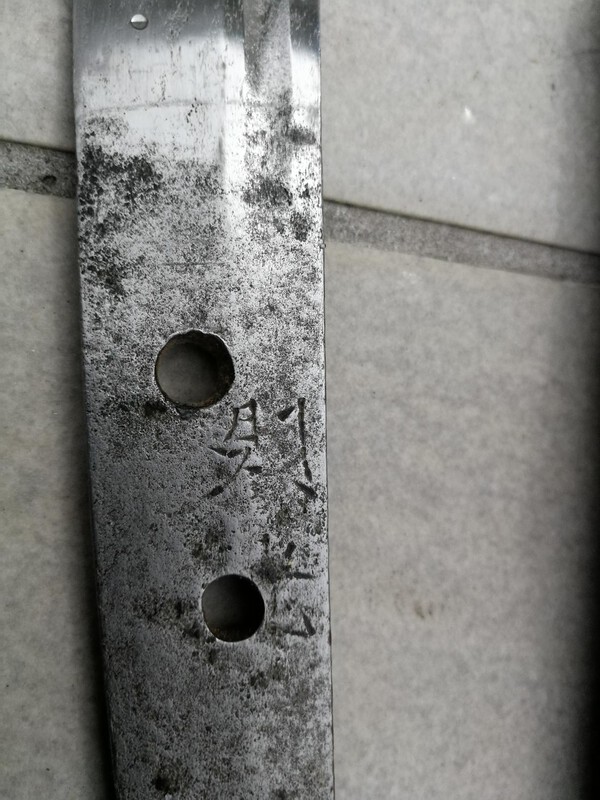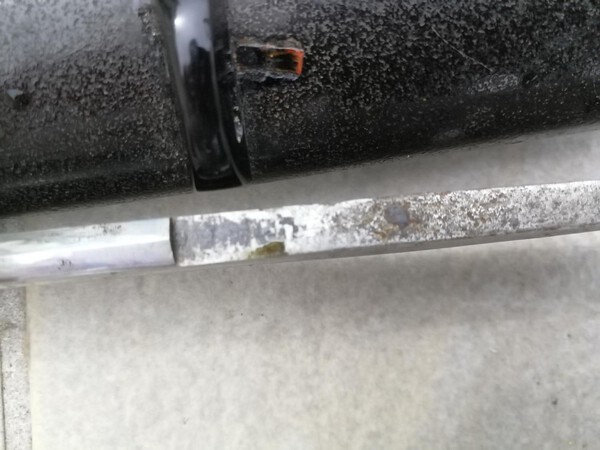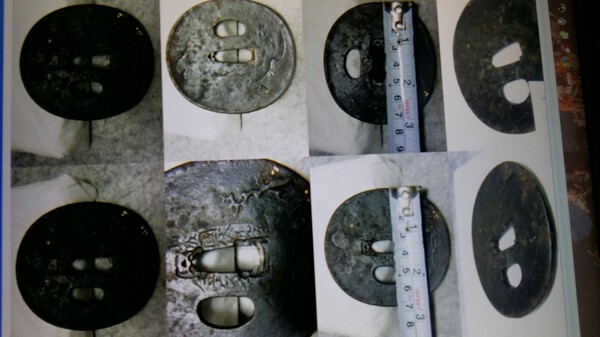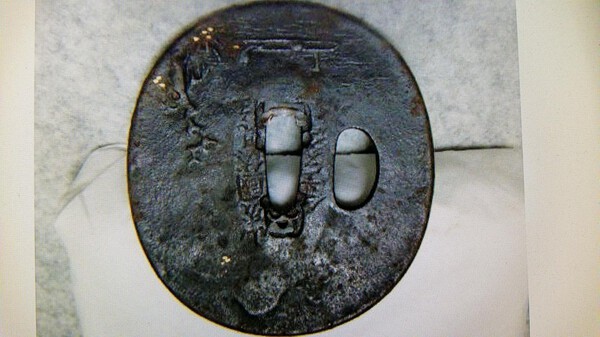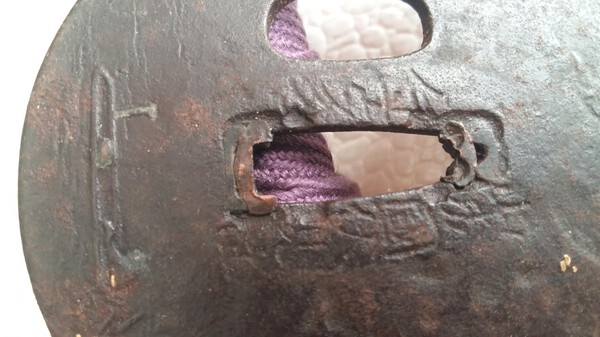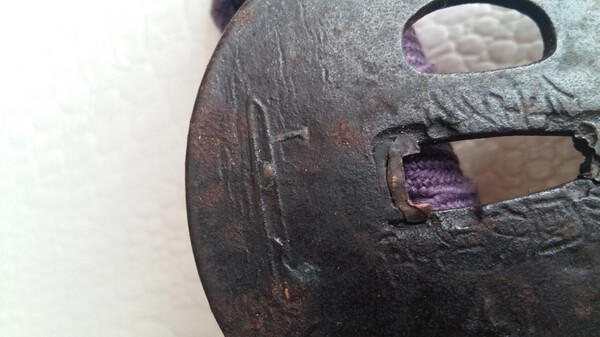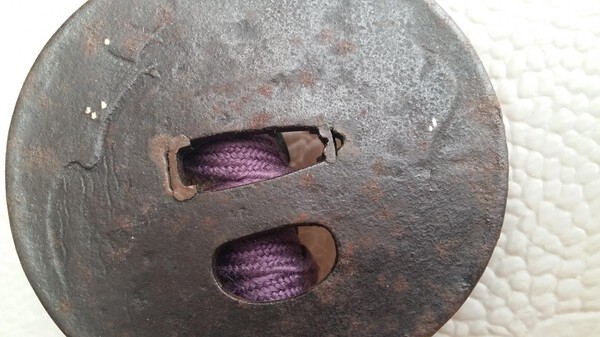
rodrig4
Members-
Posts
125 -
Joined
-
Last visited
Content Type
Profiles
Forums
Events
Store
Downloads
Gallery
Everything posted by rodrig4
-
Hello. I can't translate the second kanji. I think the first kanji is kane when the second ...? I need help . thank you. Rodriguez.
-
-
Hello. I represent this signature to you because new information could change the translation, so I appeal to your knowledge. So is this a kaga no kami Kiyoshige or a "Omi no Kami Kiyoshige", blade produced during the Kan'ei era (1624 to 1643) in Osaka. I thank you in advance. Rodriguez.
-
Hello. I actually think that the first kanji of korekazu is kore but I can't find the second kanji which would translate kazu? could you confirm ? thank you. Rodriguez.
-
Hello again. I am trying to clarify a situation about a katana dated 2003, therefore from the Heisei period. I cannot find the school to which this blacksmith belongs. it is therefore Kawahara Sadachika. I cannot affiliate it with a kantei. Rodriguez.
-
Hello. I do not manage to cross the signature that was given to me with the signature of the photo because for me it does not correspond to kanenado. could you confirm ? thank you . Rodriguez.
-
-
Hello. I can not translate this signature. a little help would be welcome. thank you. cordially. Rodriguez.
-
good evening. could you tell me if this signature exists because I searched without finding : Kaga no kami Kiyoshige. thank you. Cordially. Rodriguez.
-
Hello.I follow the advice that has been given to me and I therefore ask for an opinion on this blade of wakisashi. here are some features that I hope will be sufficient to establish an aproximation. Jidai date: appears to be Koto period (古刀, pre-1596) based on some features of the blade. Sugata structure: Shinogi-zukuri Mune: Iori-mune Boshi head: Ko-maru Kitae hada: Mokume Hamon temper lines: O-midare Nakago tang: Ha-agari Kuri-jiri Yasuri-me: Katte-sagari Mekugi hole: One Habaki collar: Dual piece copper Size (approximation): Cutting edge length (per registration): 44.9 cm (17 11/16") Nakago tang length: 14.3 cm (5 5/8") Whole blade length: 59.2 cm (23 5/16") Moto-haba: 30 mm Saki-haba: 21.5 mm Moto-gasane: 6 mm Saki-gasane: 4.5 mm Sori curve: 11 mm Kissaki point: 36 mm Fitting: 66 cm (26") Tsuka handle: 16.8 cm (6 5/8") Weight (approximation): Bare blade: 457 g (1.01 lb) With fitting: 933 g (2.06 lb) Cordially. Rodriguez.
-
Hello. I allow myself to appeal again to your knowledge. I abstained from any technical comment so as not to appear silly. cordially. Rodriguez. Tanto in a shirasaya mount. Unsigned. Slight scratches. Guaranteed against hagire. Nagasa: 21,1 cm. Sori: 2mm. Nakago: 9.4 cm. Lg. Total: 34.5 cm. Moto-haba: 2.4 cm. Saki-haba: 18.4 mm. Moto-gasane: 5.7 mm. Saki-gasane: 5.4 mm.
-
Bonjour. Je viens d'achat ce tanto. pour toutes les informations il y avait principalement des photos. J'ai donc pris la liberté d'étudier jusqu'à maintenant. Cordialement Dans le montage de Koshirae Non signé. Légères égratignures. Garanti contre la hagire. forme: hira zukuri. UNOKUBI-ZUKURI Il ressemble au KANMURI-OTOSHI-ZUKURI, mais il devient trop épais près du KISSAKI. Dans le cas de NAGINATA , ce type ou KANMURI-OTOSHI-ZUKURI (1) est commun. Nagasa: 21 cm Sori: 0,1 cm. Nakago: 9,2 cm. Moto-haba: 2,4 cm. Saki-haba: 1,82 cm. Moto-hasane: 7,3 mm. Saki-gasane: 5,2 mm. Forme de nakago: funagata. Nakagojiri: katasogi. Mekugi ana: 1. Mune: mune saki (aussi appelé matsuba-saki) .iori mune. Yasurime: - KIRI YASURI: Les traces d'outil ou de traînées sont horizontales. Lames KOTO typiques. Aussi appelé YOKO ou aussi ICHIMONJI YASUR Hada: NASHIJI HADA: passera avant le terme ITSUSU: il s'agit d'un ITAME très dense appelé "peau de poire". Hamon: sudareba avec shimaba, nioi, nioiguchi. - SHIMABA: C'est une sorte de TOBIYAKI ou d'étouffement dans la JI, mais adjacente à HAMON. Boshi: yakitsume. PS: pourriez-vous m'expliquer en dernier, quelles sont ces traces sur la mune (deux dernières photos). En ce qui concerne la datation, j’ai pensé naïvement que la couleur du nakago déterminait approximativement l’âge de la lame, car je voyais qu’elle était presque noire. Rodriguez.
-
Hello. the nakago of this wakisashi is signed yukinaga of the taira takada school , and the mune is also signed but I can not translate the kanji. could you help me . thank you in advance . cordially. Rodriguez.
-
sukemitsu Hello. could you give me your opinion on this wakisashi. more precisely on its historical value. thank you . sukemitsu kani no te (蟹 の 手) - Lit. "Crab needles" Special interpretation of gunome-midare with split yakigashira that protrude alternately left and right and reminiscent of crab claws. Please note that the term kani no te is used to refer to this feature when viewed on Sue-Seki blades. In the case of Sue-Bizen's works, the term kani no tsume (aws の lit, lit. "crab claws") is established even if the same characteristic is described. Weight: 826 grs Lg total; 87 cm Naked blade: 476 grs Lg 67 cm Cutting edge: 54 cm Moto kasane: 6mm Khaki kaki: 4.4mm Motorcycle haba: 28.5mm Saki haba: 18.3mm Mune: iori mune Sori: 9mm Kissaki: chu kissaki Nakagogiri: kengyo Yasurime: katte sagari Hamon: kani no te (蟹 の 手) Hada; itame hada Mekugi ana: 2 Tsuba from the EDO period. The mount is from the EDO period. cordially. RODRIGUEZ.
-
Hello do you know this swordmith 佐 源 Yamada Sagen 美濃 伝 Mino School in 1943. cordially. RG.
-
-
Hello. It is difficult for me to translate the signature of this tsuba. Could you help me. Cordially. Rodriguez.

